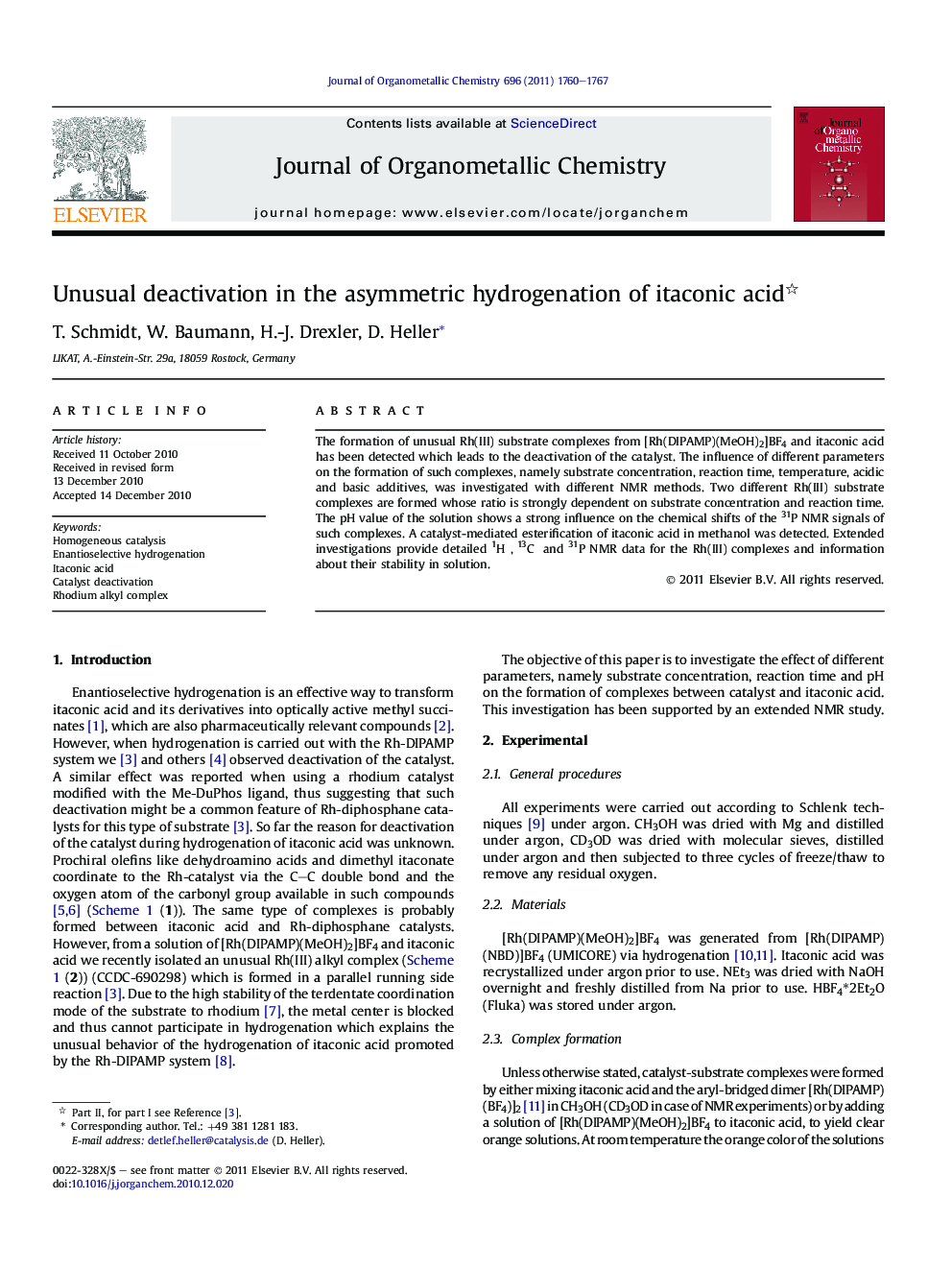| Article ID | Journal | Published Year | Pages | File Type |
|---|---|---|---|---|
| 1324416 | Journal of Organometallic Chemistry | 2011 | 8 Pages |
The formation of unusual Rh(III) substrate complexes from [Rh(DIPAMP)(MeOH)2]BF4 and itaconic acid has been detected which leads to the deactivation of the catalyst. The influence of different parameters on the formation of such complexes, namely substrate concentration, reaction time, temperature, acidic and basic additives, was investigated with different NMR methods. Two different Rh(III) substrate complexes are formed whose ratio is strongly dependent on substrate concentration and reaction time. The pH value of the solution shows a strong influence on the chemical shifts of the 31P NMR signals of such complexes. A catalyst-mediated esterification of itaconic acid in methanol was detected. Extended investigations provide detailed 1H, 13C and 31P NMR data for the Rh(III) complexes and information about their stability in solution.
Graphical abstractThe objective of this paper is to investigate the effect of substrate concentration, reaction time and pH on the formation of Rh(III) alkyl complexes as unusual deactivation in the asymmetric hydrogenation of itaconic acid.Figure optionsDownload full-size imageDownload as PowerPoint slideHighlights► Itaconic acid forms two stable Rh(III) alkyl complexes with [Rh(DIPAMP)(MeOH)2]BF4. ► The ratio of that probably diastereomers varies with time and substrate concentration. ► The complex signals in the 31P NMR spectra is influenced by acidic and basic additives. ► The X-ray structure of Rh(DIPAMP)(methyl succinate)] was also confirmed in solution.
